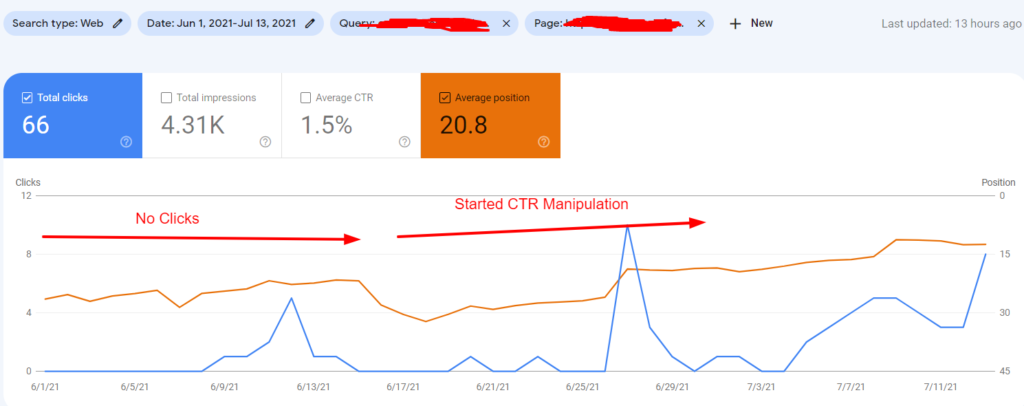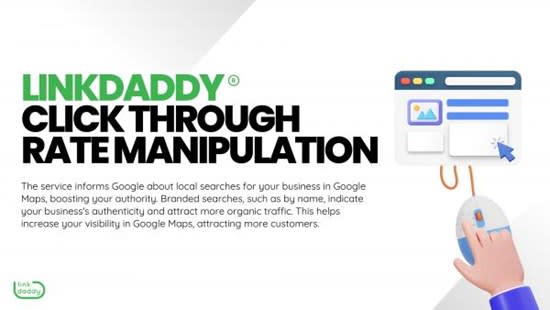LinkDaddy CTR Manipulation-- Proven Approaches for Better Online Interaction
LinkDaddy CTR Manipulation-- Proven Approaches for Better Online Interaction
Blog Article
CTR Control: A Game Changer for Digital Campaigns
The rise of CTR manipulation has actually unquestionably changed digital marketing methods, offering marketing experts with tools to enhance interaction and drive traffic properly. What implications might this stabilizing act hold for the future of digital campaigns?
Recognizing CTR Control
Although click-through price (CTR) manipulation may feel like a simple method in digital advertising, it encompasses a variety of approaches aimed at unnaturally blowing up engagement metrics. This control can take numerous forms, consisting of making use of click farms, robots, or deceitful advertisement placements that misinform customers right into clicking. These methods can jeopardize the honesty of efficiency data, making it testing for marketing professionals to gauge the genuine efficiency of their projects.
In addition, CTR manipulation raises honest worries, as it threatens the openness of electronic advertising. The reliance on inflated metrics can result in misdirected advertising and marketing choices, skewing source appropriation and campaign strategies. Services might spend greatly in channels and strategies that appear successful however do not produce genuine interaction or conversions.

Advantages of Click-Through Price Optimization
Optimizing click-through rate (CTR) is essential for boosting the efficiency of digital marketing projects. A higher CTR indicates that a larger percentage of customers are engaging with the content, which can bring about boosted site traffic and far better conversion rates. By boosting CTR, brand names can efficiently allot their advertising and marketing resources to initiatives that produce the greatest returns.
Among the main benefits of CTR optimization is the possibility for improved advertisement placement and reduced expenses - CTR Manipulation. Systems like Google Ads reward higher CTRs with much better advertisement positioning and decreased cost-per-click (CPC), permitting marketing professionals to stretch their spending plans even more. In addition, a well-optimized CTR can enhance brand name visibility, as greater involvement rates usually correlate with raised organic reach

Strategies for Efficient CTR Control
To effectively manipulate click-through rates (CTR), marketers can use a range of critical techniques that enhance individual involvement and drive traffic. One essential technique is maximizing ad copy to produce engaging and action-oriented language. CTR Manipulation. Making use of solid call-to-action (CTA) phrases motivates individuals to take prompt activity, increasing the possibility of clicks
One more efficient strategy is A/B screening, which permits marketers to compare review different ad variations. By systematically examining efficiency metrics, they can recognize which components reverberate ideal with the target market, thereby refining their methods for optimal effect. Furthermore, leveraging visually attractive graphics and succinct messaging can catch interest quickly, making it a lot more likely that customers will certainly involve.

Last but not least, maximizing touchdown pages to guarantee a seamless user experience can reduce bounce prices and motivate additional interaction, ultimately fostering greater CTR. By incorporating these methods, online marketers can efficiently manipulate CTR to attain their project objectives.
Measuring Success in Digital Projects
Determining success in digital campaigns calls for a clear understanding of crucial efficiency indicators (KPIs) that align with project purposes. KPIs work as measurable metrics that help assess the effectiveness of numerous methods utilized throughout the campaign. Common KPIs consist of click-through rates (CTR), conversion prices, price per acquisition (CPA), and roi (ROI)
To successfully measure success, it is vital to develop details, measurable objectives initially of the project. If the primary goal is to raise brand recognition, metrics such as impressions and involvement rates may be focused on. In comparison, campaigns concentrated on direct sales would take advantage of a more in-depth analysis of conversion rates and profits generated.
Routine evaluation of these KPIs enables marketing experts to make data-driven decisions, enhancing their approaches in real-time. Utilizing analytical devices can assist in tracking performance and determining fads, enabling swift modifications to boost project outcomes. Eventually, a thorough approach to determining success not just highlights locations for renovation but likewise enhances advice the total performance of digital advertising and marketing initiatives, driving continual development and engagement in the long-term.
Future Fads in Digital Advertising And Marketing
Anticipating the future of digital marketing reveals a landscape shaped by fast technological improvements and transforming customer actions. As fabricated click here to find out more intelligence and device discovering proceed to progress, marketers will increasingly leverage these technologies to individualize projects at an extraordinary range. Anticipating analytics will certainly allow brands to anticipate customer needs, maximizing advertisement positionings and material distribution in actual time.
Additionally, the rise of voice search and smart tools is changing exactly how customers interact with electronic material. Marketers will certainly need to adapt their strategies to make sure presence across several platforms, including voice-activated assistants. This shift demands a focus on conversational advertising, emphasizing interaction with discussion instead of typical promotional techniques.
Additionally, personal privacy concerns are motivating adjustments in data collection techniques. Openness and honest data use will come to be vital, driving brands to cultivate count on and commitment among customers. The continuous advancement of social networks platforms will certainly also influence marketing methods, with a heightened emphasis on credibility and user-generated content.
Final Thought
In recap, CTR control stands for a substantial advancement in digital marketing techniques, providing instant benefits with improved interaction metrics. The honest considerations surrounding such practices demand a mindful technique to make sure long-lasting brand integrity and real audience connection. By striking a balance between optimization techniques and authentic interaction, marketers can grow lasting relationships with consumers. The recurring development of electronic advertising and marketing will depend upon this fragile interplay, shaping the future landscape of brand-consumer communications.
Report this page